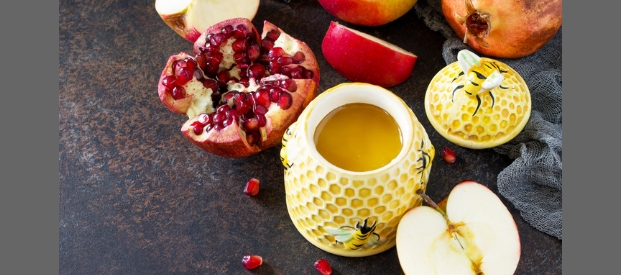Yom Kippur, Days of Awe and Jewish New Year
Rosh Hashanah, or the Jewish New Year, began at sunset on 9 September and continued for two days at the beginning of the holiest time in the Jewish year. Strange as it may seem, this doesn’t occur at the start of the year but on the first day of the seventh month – the lunar month of Tishri.
Translated literally, Rosh Hashanah means ‘head of the year’. It is also referred to as the ‘birthday of the world’, although it is not the first day of the Creation but the sixth: the day on which God created Adam. Thus the Jewish New Year celebrates the birthday of the entire human race.
What happens at Rosh Hashanah?
On the morning of Rosh Hashanah the sound of the Shofar, a ram’s horn trumpet, calls worshippers to prayer, playing one hundred notes in a special rhythm and welcoming God as King of the Universe.
As well as coming to the synagogue to confess their sins, many people attend the Tashlich ceremony which takes place beside a stream or river. After a prayer, participants throw pieces of bread to be washed away in the flow of water – symbolically casting away their sins.
On this day God judges the world, looking at each person’s actions over the past year, weighing up the good and bad, determining what the next year will be like for every individual, and recording his judgement in the Book of Life.
Sweet foods are prepared and eaten in anticipation of a sweet new year ahead: apples dipped in honey and ‘tzimmes’, or sweet carrot stew. A fish head or sheep’s head may be on the menu too, suggesting the wish to be like a head rather than a tail; making progress in the coming year rather than lingering behind. Challah bread is made in a circle instead of its usual plait, representing the circle of life and the year.
It’s also traditional to eat new or unusual fruit, symbolising trying new experiences. One of the favourites is the pomegranate whose 613 seeds are a reminder of the 613 commandments in the Hebrew Bible.
The Days of Awe
The ten days following Rosh Hashanah are known as the ‘Days of Awe’. This is a time for reflecting on past behaviour, owning up to mistakes, and apologising. It’s a time for thinking about how to live a better life and be more caring towards others, and for contemplating ways to play a greater part in making the community stronger.
Yom Kippur
The solemn festival of Yom Kippur falls immediately after the Days of Awe. In 2018 this begins at sundown on Tuesday 18 September. On this holiest day of the Jewish year, people go to the synagogue five times to pray for forgiveness and a good year to come. Most people fast for 25 hours, ignoring physical desires in order to focus on spiritual needs.
God makes the final decision on what the future will hold, and The Book of Life – containing the judgement for the year ahead for every man, woman and child – is sealed as the sun goes down. Finally one single long blast of sound played on the Shofar marks the end of the holy day.
It’s time for the good resolutions to begin.










